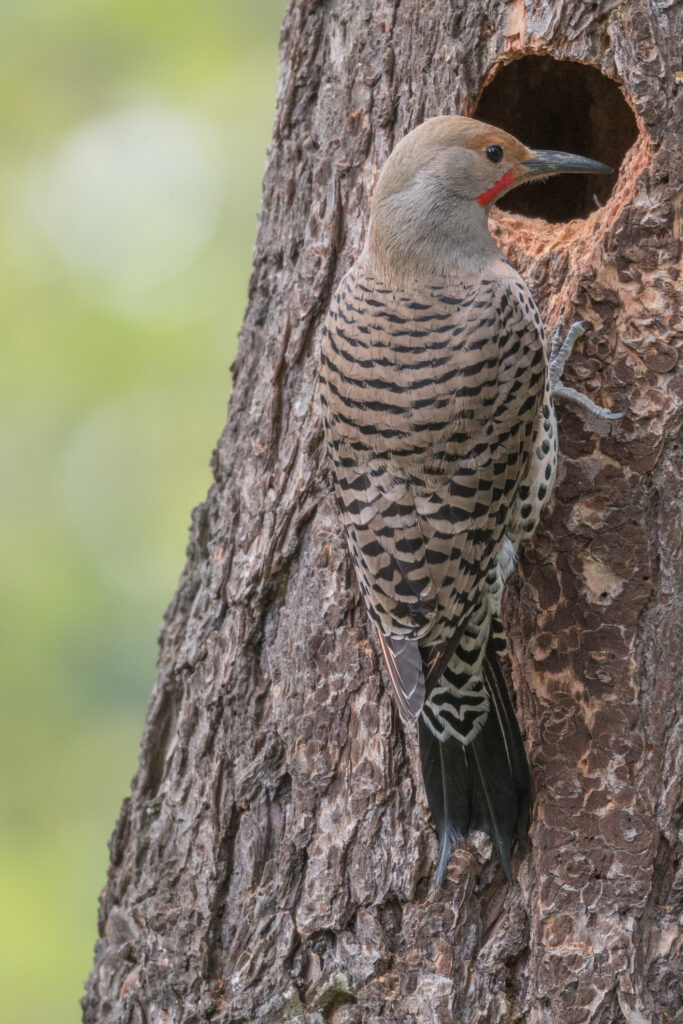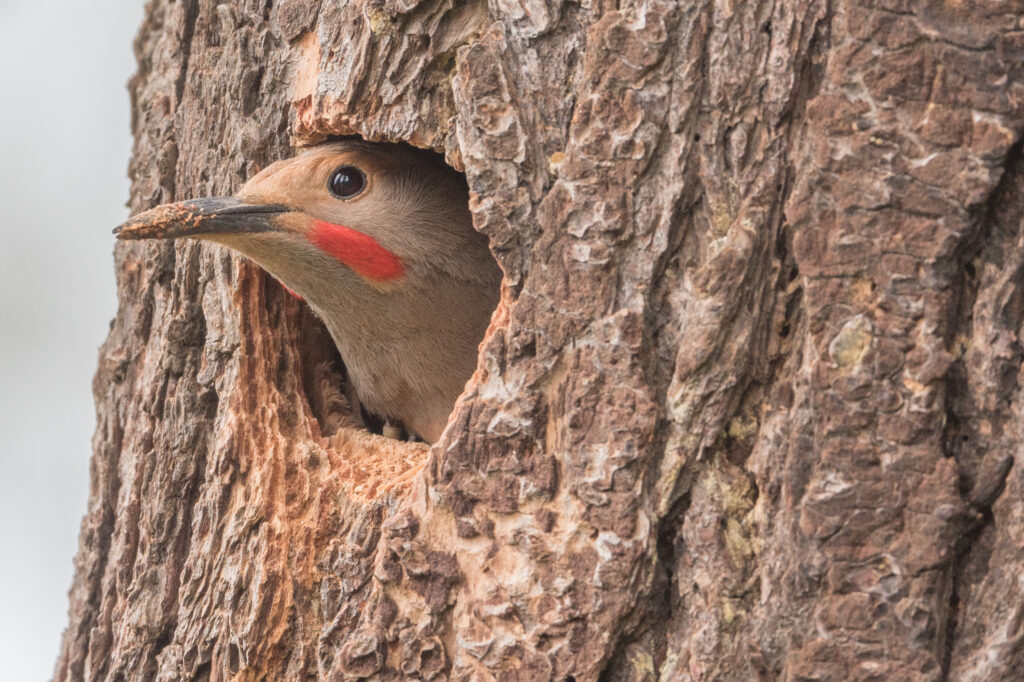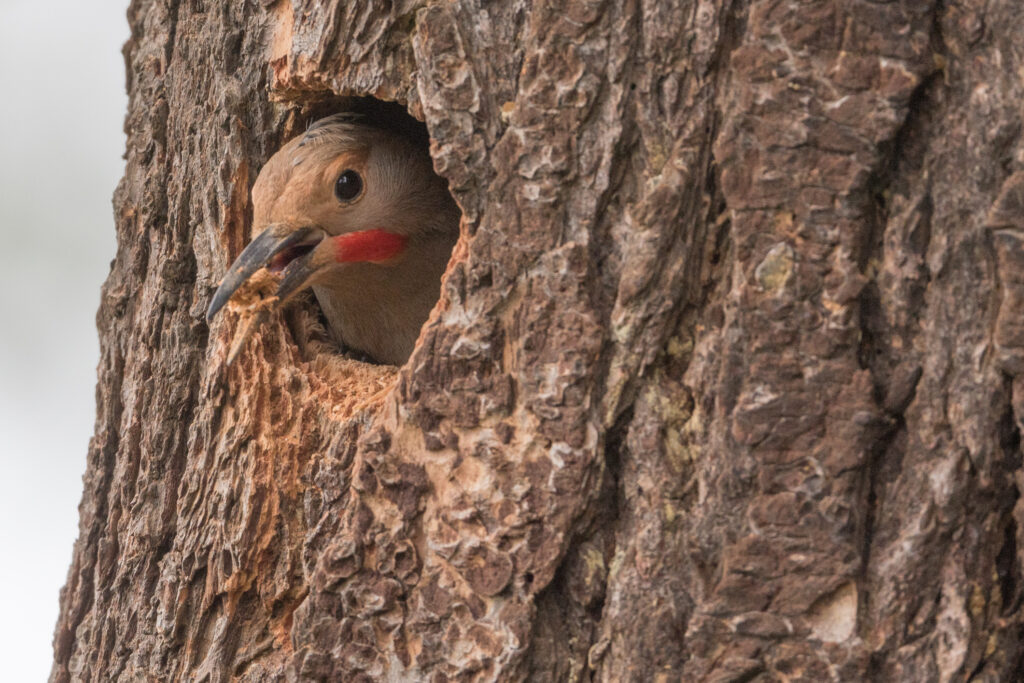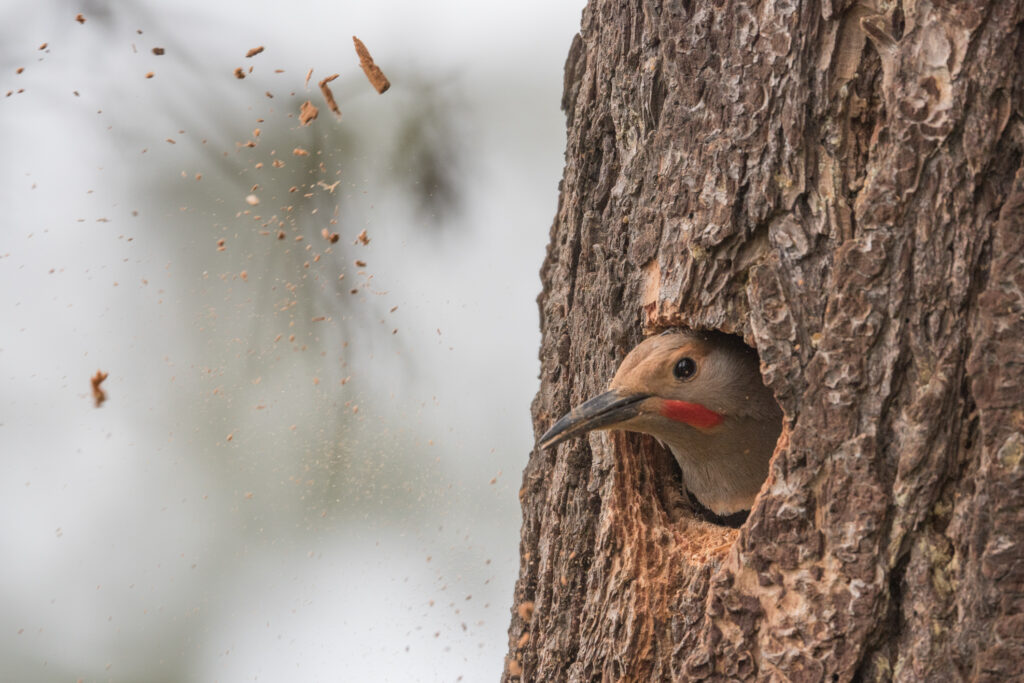On April 19, 2022, I was graciously made aware of the apparent construction of a nesting cavity by a pair of Northern flickers. The following day I had an opportunity to monitor the activity.
When first arriving at the site I found a dead fir tree, about 12 inches in diameter, that had been topped about 20 feet off the ground. The tree had two holes holes about 10-12 feet above the ground and the lower hole bore the marks of fresh excavation. Small wood chips littered the ground around the base of the tree.
There seemed to be no activity around the site and my attention was focused getting my chair positioned and my camera adjusted for the photographic conditions.
I was ready for monitoring and glanced up at the hole to see both the male and female clinging to the tree beside the hole! Before I could bring my camera to bear both bids flew to the top of a power pole across the street and engaged in action that will eventually result in baby woodpeckers. The female then flew to the top of a distant tree and after a few minutes the male flew back to the tree and entered the nesting cavity.

Thus began continuation of construction on the nesting cavity. The male would completely disappear and I would hear several minutes of muffled tapping sounds, then he would reappear several times and toss wood chips out the hole.

I watched for 30-40 minutes, taking many photos which didn’t offer a lot of variation. In the photos below you can see the male with a beak full of wood chips in one photo and just-tossed chips in another. The female never returned during my observations.


There should be a lesson here for the value of retaining some vestige of dead trees! Not only do they provide potential homesites for cavity-nesting birds, but as various insect species tunnel into the wood aiding in the natural process of decay, the parents can pluck them out to provide a tasty buffet for the young birds.
